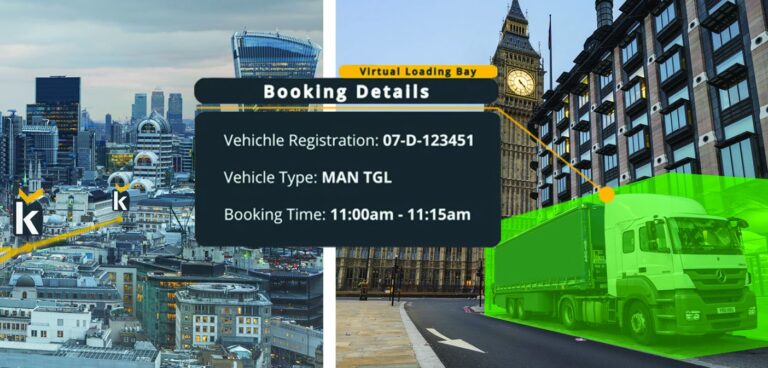Innovation in kerbside management is the one to watch, as cities become smarter and begin to see the value in this prime, yet undervalued, piece of real estate.
With kerb space the ‘lubricant’ of so much city centre commerce, it is surprising that few people have yet given much thought to how the infrastructure is handled. However, some forward-thinking cities globally are beginning to recognise the power of effective kerbside management in reducing congestion and improving urban air quality, with technology fuelling this movement.
Conventionally, city solutions in both congestion and mobility management have focused on low-emission zones and congestion charging. Active travel schemes to encourage a modal switch from car usage have been at the forefront of the conversation, with additional developments in DRT (demand-responsive transport) technology and electric vehicle roll outs leading the innovation agenda. However, headway in congestion and air-quality challenges from the commercial vehicle sector, requires new hyperlocal, targeted solutions to address the issues.
Congestion delays alone costs the UK economy over £6.9bn a year in lost revenue. Freight vehicles, for example, spend additional time on the roads circling around looking for somewhere close to their destination to unload their goods or park. These frequent micro delays impact operational efficiency and ultimately, bottom line performance.
The issues are two-fold. City authorities need to tackle air quality and congestion in the urban environment, while the business needs are to deliver goods and services efficiently to keep cities running.
Mobility innovation start-up Grid Smarter Cities is transforming how we think about the kerbside. The company’s innovative digital kerbside solution, aptly named ‘Kerb’, enables a normally tightly restricted city asset to be opened up for a multitude of purposes that support the community, businesses and the environment; and can be actioned at a hyperlocal level with prioritisation hierarchies determined by the council and business need.
Kerb’s functionality can meet the needs of a range of city requirements, bringing order to the kerb through real-time, digitalisation of bookable parking bay slots. This reduces the need for circling from vehicles trying to find a space and in turn reduces congestion and emissions, while improving efficiency for operators.
The natural corollary is that vehicles booking a delivery slot will also be able to access EV charging infrastructure at the same time, effectively ‘grazing’ across the network. Imagine having the flexibility to use the kerbside in the morning for unloading goods and in the afternoon a disabled parking bay and a taxi rank or street eatery in the evening. With more and more pressure on this limited space, local authorities are looking for innovative ways of enabling greater kerbside usage in a way that is flexible, safe and offers equitable access for all.
As Neil Herron, CEO of Grid Smarter Cities, states; “In 10 years time we will look back and say, did we really allow hundreds of thousands of commercial vehicles to enter London every day to fight for kerb space on a first-come first-served basis?
“It seems so obvious when managing an airport, that an air traffic control system is necessary. And now, with the technology available, it is becoming just as obvious at the kerb.”
Innovative trials are already underway in the Netherlands with the UK leading the way in the London Borough of Southwark, and growing interest across the UK and internationally.
For more information, please contact:
Julian Wrigley
Chief Operating Officer
Grid Smarter Cities
E: julian.wrigley@gridsmartercities.com
T: 07597 840465





